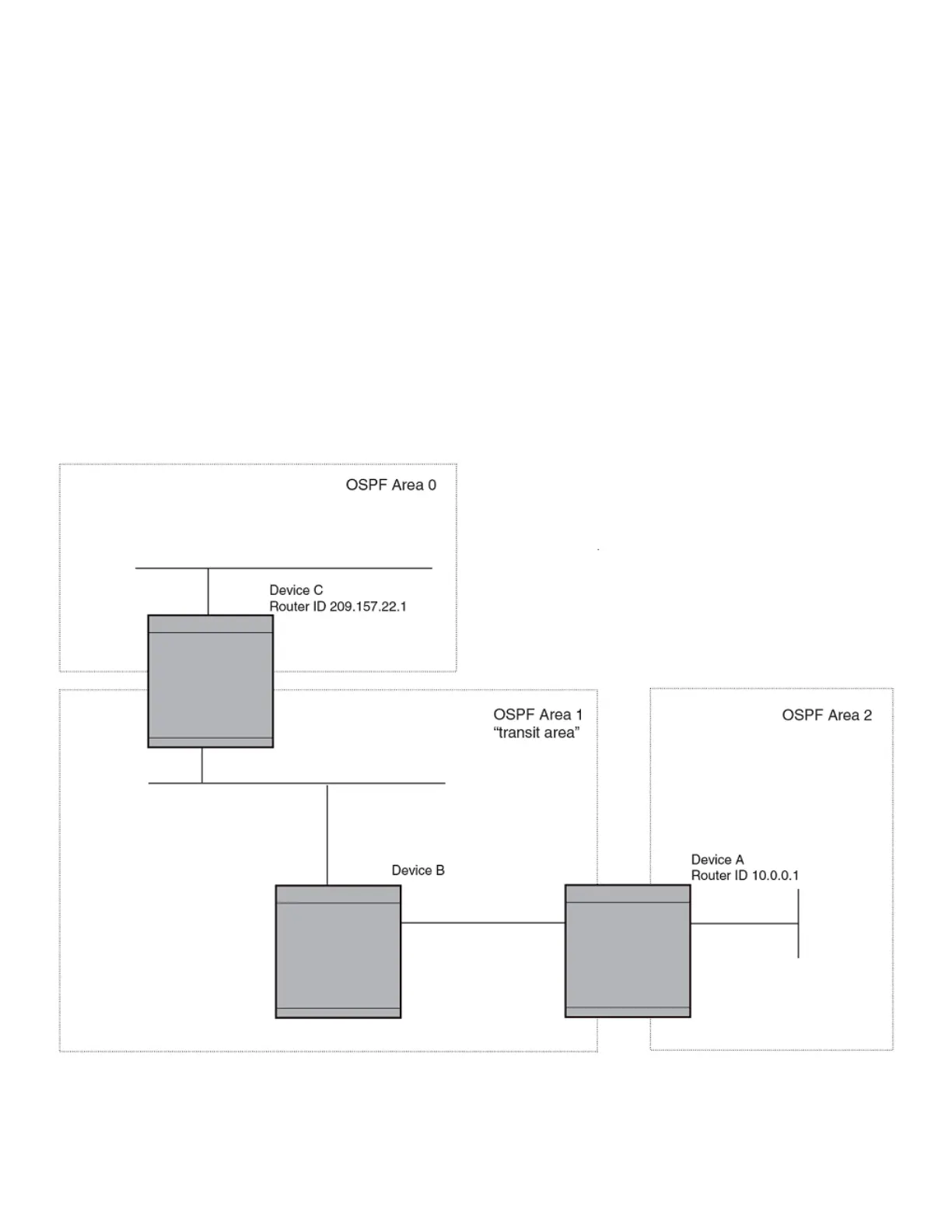The path for a virtual link is through an area shared by the neighbor ABR (router with a physical backbone connection), and the ABR
requiring a logical connection to the backbone.
Two parameters elds must be dened for all virtual links--transit area ID and neighbor router:
• The transit area ID represents the shared area of the two ABRs and serves as the connection point between the two routers. This
number should match the area ID value.
• The neighbor router eld is the router ID (IP address) of the router that is physically connected to the backbone, when assigned
from the router interface requiring a logical connection. When assigning the parameters from the router with the physical
connection, the router ID is the IP address of the router requiring a logical connection to the backbone.
NOTE
By default, the Brocade device’s router ID is the IP address congured on the lowest numbered loopback interface. If the device
does not have a loopback interface, the default router ID is the lowest numbered IP address congured on the device. When you
establish an area virtual link, you must congure it on both of the routers (both ends of the virtual link).
FIGURE 23 Dening OSPF virtual links within a network
Conguring OSPF
FastIron Ethernet Switch Layer 3 Routing
244 53-1003627-04

